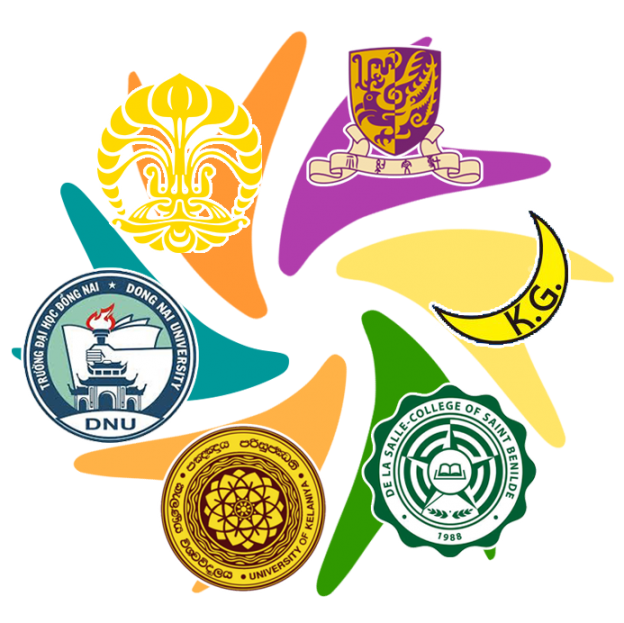Many hearing people have the misconception that sign languages are expressed only through the moving hands and arms. This is not true. In fact, sign languages are visual-gestural languages in which linguistic information can be expressed by the hands and other parts of the body, e.g., facial actions, positions and movements of the head, shoulders, and upper body as a whole (Crasborn, 2006). These linguistic signals produced by body parts other than one’s hands are known as non-manual markers, non-manual signals, or just non-manuals. Non-manuals are typically used simultaneously with the manual signs, and they may function at different linguistic levels. In this module, we will mainly focus on the use of non-manuals on the phonological, lexical and morphological levels with examples from HKSL. The next module will discuss examples of non-manuals on the syntactic level.
At the phonological level, a non-manual signal can be an integral part of a sign but it does not carry an identifiable meaning itself. In HKSL, both SITUATION (Example 1) and MATTER (Example 2) require the lip-rounding feature, which does not seem to have any specific meaning on its own.
Example 1: SITUATION
Example 2: MATTER
Some lexical signs require non-manual signals that gesturally and visually represent how a person would look like when performing specific actions.
Example 3: SOFT-DRINK
Example 4: BIRTHDAY-CAKE
The sign SOFT-DRINK in HKSL depicts a person drinking beverage with a drinking straw. The lip-rounding feature corresponds with the shape of a mouth with a straw inside. In BIRTHDAY-CAKE, the lip-rounding feature mimics the mouth action of blowing out a candle on a birthday cake. Both instances of lip rounding are visually iconic.
Some visually iconic non-manuals involve other facial features as well.
Example 5: INFLATE-A-BALOON
Example 6: DETECTIVE
In INFLATE-A-BALOON, the signer’s cheeks are puffed, just like what happens to our cheeks when we blow up a balloon. The sign DETECTIVE mimics a person holding and seeing through a magnifying glass, which is a commonplace impression of what a detective usually looks like in cartoons or movies.
The non-manuals in Example 3 to 6 are visually iconic, and they are closely tied to the meaning of the manual signs.
However, at the morphological level, some non-manual signals are actually independent from the manual signs. These non-manual signals provide additional meaning to the signs. Example 7a shows the HKSL verb DO-HOMEWORK and Example 8a shows the HKSL verb CUT-PAPER-WITH-SCISSORS. In Example 7b and Example 8b, the two verbs are accompanied with a set of non-manuals (i.e., eyebrow-raising, tongue protrusion, side-to-side head movements) which carry the adverbial meaning “+haphazardly”.
Example 7a: DO-HOMEWORK
Example 7b: DO-HOMEWORK + haphazardly
Example 8a: CUT-PAPER-WITH-SCISSORS
Example 8b: CUT-PAPER-WITH-SCISSORS + haphazardly
Note that this non-manual adverb (i.e., +haphazardly) is not visually iconic, because a person does not actually look like this when doing something haphazardly. This adverb is combined with the verbs in a simultaneous fashion.
Example 9 and 10 illustrate another non-manual adverbial “+with-difficulty” in HKSL. Example 9a shows a simple sentence, ‘A truck goes up the hill’. In Example 9b, the truck is loaded with heavy boxes and it is difficult for the truck to go uphill. The adverbial meaning “+with difficulty” is partially expressed by the signer’s facial expression (i.e., clenched teeth, wrinkled nose, narrowed eyes). Example 10b shows the same non-manual adverb overlaid on the verb CL[=open a jar lid].
Example 9a:
HILL TRUCK CL[=truck go uphill]
‘A truck goes up the hill.’
Example 9b:
TRUCK CL[=boxes of goods on lorry] MANY HILL CL[=truck go uphill with difficulty]
‘A truck goes up the hill with difficulty.’
Example 10a:
CL[=open a jar lid]
‘Open a jar lid’
Example 10b:
CL[=open a jar lid with difficulty]
‘Open a jar lid with difficulty’
The examples discussed above show that non-manual signals are common in HKSL on the phonological, lexical and morphological level. In the next module, we will discuss non-manual signals on the syntactic level with further examples from HKSL.
References:
- Crasborn, O. (2006). Nonmanual structures in sign languages. In K. Brown (Ed.), Encyclopedia of language & linguistics (Vol. 8, pp. 668-672). Elsevier.
![]()
